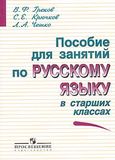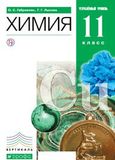Упр.33 Unit 1 ГДЗ English Михеева 11 класс
Новая грамматика
Грамматика, как вы знаете, это наука, которая учит структурировать любой язык. Две ее части это морфология и синтаксис. Морфология работает с частями речи. Вы, в основном, занимаетесь морфологией. Синтаксис изучает предложения, их типы и значения.
Предложение
Каждый раз, как мы говорим, мы используем предложения.
Предложение это комбинация слов, которые выражают законченную мысль.
Важно, что предложения:
- Для того чтобы создать высказывания (повествовательные предложения): а) куст роз рос в саду (утвердительное предложение) b) Эллис еще не умеет читать (отрицательное предложение)
- Для того, чтобы задать вопрос (вопросительные предложения): а) Моцарт много путешествовал в детстве? (общий вопрос) b) Джон родился в Нью-Йорке или в Бостоне? (альтернативный вопрос) с) Она не говорит по-французски, не так ли? (разделительный вопрос) d) Где ты живешь: Кто это сделал? (специальный вопрос)
- Чтобы просить или требовать действие (повелительные предложения): Позвони мне завтра, пожалуйста.
- Для выражении эмоций (восклицательные предложения): Какой замечательный она танцор!
Примечание: Не забудьте использовать точку, вопрос или восклицательный знак в конце предложения. Помните, что в вежливых просьбах или когда вы предлагаете что-то, вопросительный знак также используется в конце предложения. Можно мне стакан воды? Не могли ы вы отправить это письмо мне? Мне интересно, мы могли взять ваш словарь?
33. Прочитайте предложения и скажите, какие из них повествовательные, отрицательные, повелительные или восклицательные.
Например: модернизм в музыке привел к радикальным изменениям в существующих традициях. (утвердительное повествовательное)
1. пианино не самое старое из клавишных инструментов.
2. Пасидо Доминго был тенором или басом?
3. как долго Сергей Прокофьев жил заграницей до того как вернулся в Советский Союз?
4. Какой необычный музыкальный инструмент!
5. Я не считаю, что мне нужен словарь общих музыкальных терминов.
6. Расскажи мне все, что можешь о рок-н-ролле.
7. Иммигранты привнесли в США народную музыку своих родных стран.
8. К 1920м годам популярность джаза распространилась далеко за пределы чернокожего населения, не так ли?
9. Британская группа Биттлз взяла рок, и затем смешала его с музыкальными идеями из других частей мира.
10. Как драматично звучит музыка!
11. Давай пойдем и послушаем Женитьбу Фигаро В. А. Моцарта.
12. Ты когда-либо слышал имя Дюка Элингтона?
Решение #
Declarative:
a) positive 7, 9;
b) negative 1, 5;
interrogative: 2, 3, 8, 12;
imperative: 6, 11;
exclamatory: 4, 10.
Приведем выдержку из задания из учебника Михеева, Афанасьева 11 класс, Просвещение:
New Grammar
Grammar, as you know, is a science that studies structure of any language. The two parts of it are MORPHOLOGY and SYNTAX. Morphology deals with parts of speech. You have been mostly doing morphology so far. Syntax studies sentences, their types and their meanings.
SENTENCE
Every time we speak, we use sentences.
A sentence is a combination of words which expresses a complete thought.
It is important what sentences are for:
• to make statements (declarative sentences): a) A rose bush grew in the garden (positive sentence); b) Alice can't read yet (negative sentence).
• to ask questions (interrogative sentences): a) Did Mozart travel a lot in his childhood? (a general question); b) Was John born in New York or Boston? (an alternative question); c) She doesn't speak French, does she? (a disjunctive question); d) Where do you live? Who did it? (special questions)
• to request or demand action (imperative sentences): Give me a call tomorrow, please.
• to express emotions (exclamatory sentences): What a wonderful dancer she is!
Note: Don’t forget to use a full stop, a question or an exclamatory mark at the end of a sentence. Mind that in polite requests or when you suggest or offer something, a question mark is also used at the end of a sentence. Could I have a glass of water? Cart you post this letter for me? I wonder if we could borrow your dictionary?
33. Read the sentences and say which of them are declarative, interrogative, imperative or exclamatory.
Example: Modernism in music involved a radical break with the existing conventions (positive declarative).
1. The piano is not the oldest of the keyboard instruments.
2. Was Placido Domingo а tenor or а bass?
3. How long did Sergei Prokofiev live abroad before he returned to the Soviet Union?
4. What an unusual electronic instrument!
5. I don’t think I need a dictionary of common musical terms.
6. Tell me all you can about rock’n’roll.
7. Immigrants to the USA brought folk music from their native countries.
8. By the 1920s the popularity of jazz had spread far beyond the black community, hadn’t it?
9. A British group, the Beatles, adopted rock, then mixed it with musical ideas from other parts of the world.
10. How dramatic the music sounds!
11. Let’s go and listen to The Marriage of Figaro by W. A. Mozart.
12. Have you ever heard the name of Duke Ellington?
Похожие решебники
Популярные решебники 11 класс Все решебники
*размещая тексты в комментариях ниже, вы автоматически соглашаетесь с пользовательским соглашением







